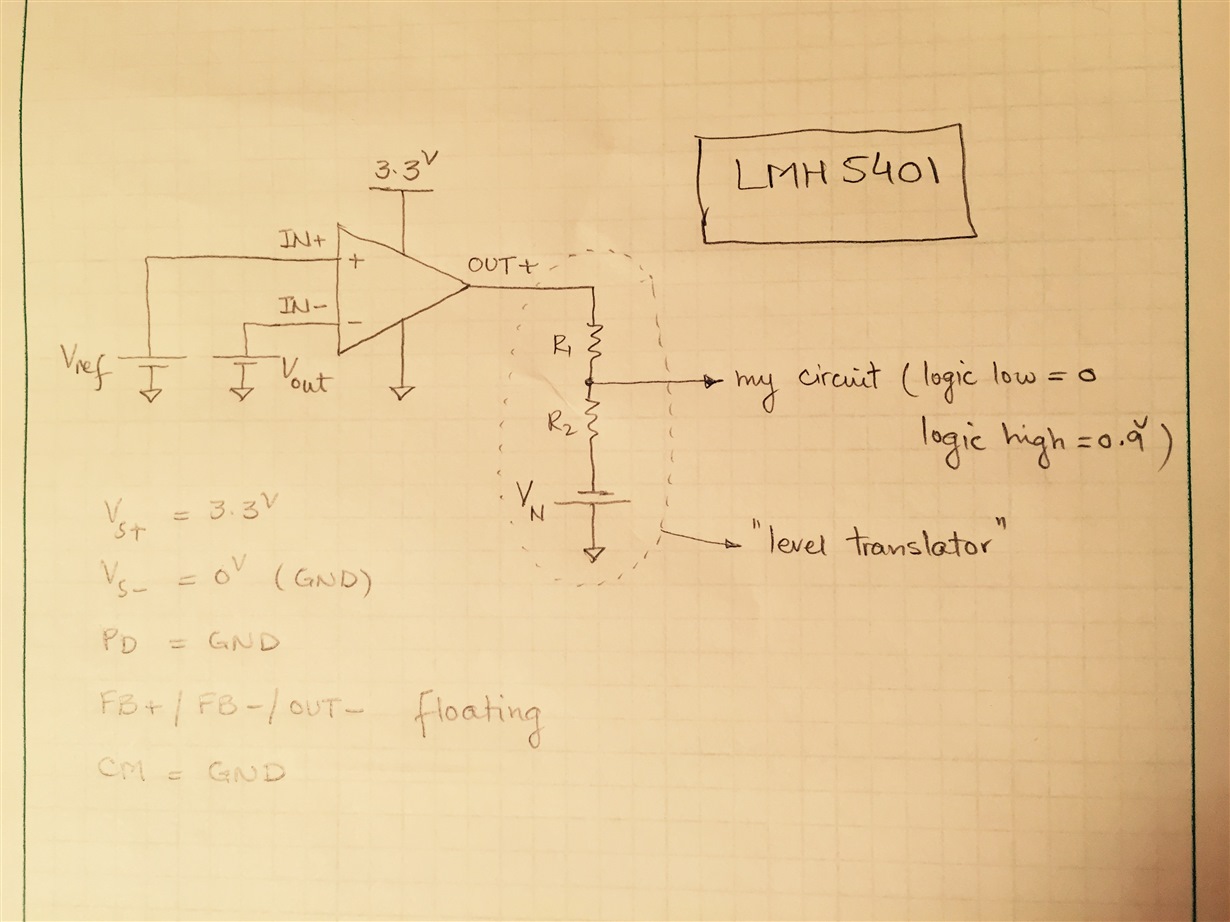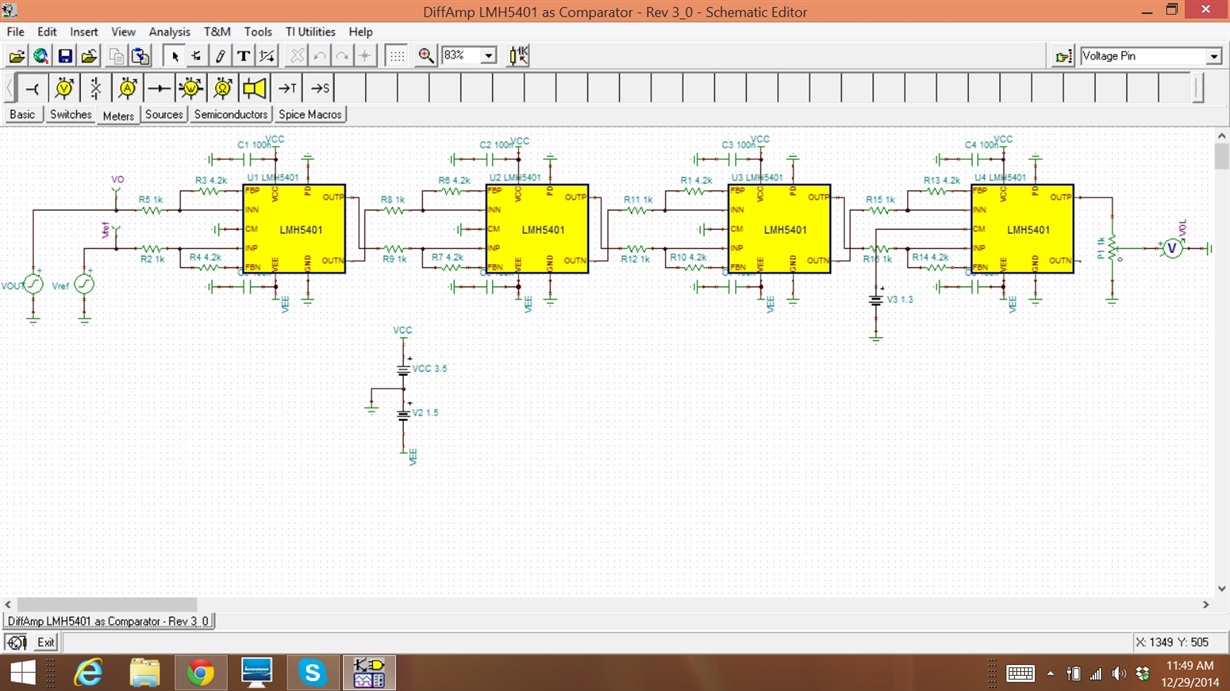Please comment on the following:
I would like to use LMH5401 as a comparator by applying my two signals to IN+ and IN- pins and looking at OUT+ and use the output network as shown below to adjust my output levels to the desired logic levels.
VS+ @ 3.3 V
VS- @ GND (0 V)
PD / CM @ GND
FB+ / FB- / OUT- @ not connected



